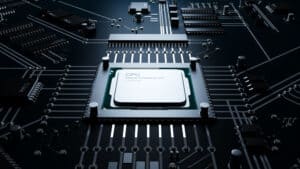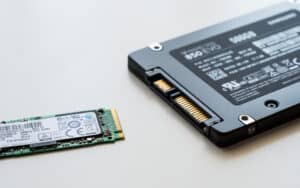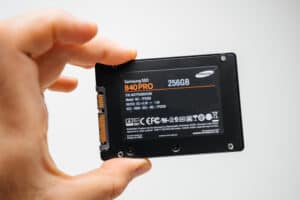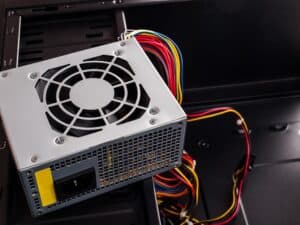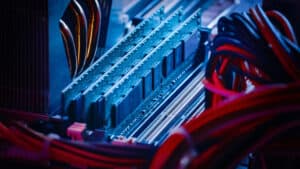
Having a computer or laptop overburdened by high GPU usage is annoying and can bog down your entire system. But, with a few tweaks and adjustments, you can reduce that GPU usage significantly while still getting the performance you want.
For those experiencing high GPU usage on their computer, a few things can be done to conserve resources, such as configuring the graphic settings, minimizing graphics-intensive applications, updating drivers, etc.
First, be aware that several factors can affect GPU usage: your graphics card, your OS, the games you’re playing, and your system configuration. So, trying different things is essential to see what works best for you.
In this article, we’ll show you how to lower GPU usage on your PC so that it doesn’t hog too much of your resources.
- Method #1: Disable Applications With High GPU Usage
- Method #2: Update or Reinstall GPU Drivers
- Method #3: Lower Game Resolution and Settings
- Method #4: Configure Settings in GeForce Experience (For Nvidia GPUs)
- Method #5: Configure Settings in AMD Radeon Software (For AMD GPUs)
- Frequently Asked Questions
Method #1: Disable Applications With High GPU Usage
GPUs are essential for gaming and other multimedia applications, but they can also drain your system’s overall performance if used excessively.
With Windows’ built-in task manager, you can find which apps use a lot of GPU and uninstall or disable them as necessary.
Using the following steps, you can reduce system resource utilization dramatically by disabling applications with high GPU usage.
- Open the task manager by right-clicking on the taskbar.
- Click the “Processes” tab from the top menu.
- Right-click the upper bar and enable GPU if you don’t see GPU usage.
- Find the application with the most GPU usage.
- Right-click the process with most GPU usage and click “End task”.
Normally, this will only temporarily close the app with a lot of GPU activity. Still, you can take a more solid approach by uninstalling such graphics-intensive apps or limiting their usage.
Method #2: Update or Reinstall GPU Drivers
Sometimes, the GPU drivers can become outdated or malfunction, leading to high GPU usage.
Updating your drivers will automatically detect any new driver updates and install them for you while reinstalling them will completely uninstall any previous drivers and install the latest version.
To reduce GPU usage on your computer, you can uninstall and reinstall graphics drivers following these steps.
- Uninstall your previous graphic drivers with the help of a program called DDU (Display Driver Uninstaller).
- Update or reinstall drivers using GeForce Experience if your GPU is from Nvidia or AMD Radeon Software if your GPU is from AMD.
Once you have updated or installed the appropriate driver, restart your computer and see if the issue has been resolved.
Method #3: Lower Game Resolution and Settings
Lowering resolution and graphical settings in-game can also help to lower overall GPU usage, especially if you’re experiencing an issue with your graphics card.
The following steps will help you to adjust your graphical settings in-game in a way that doesn’t overburden your GPU.
- Open the settings of the game that you’re playing, then go to the video settings.
- Change the “Graphics Quality” setting from “High” to “Medium” or “Low”.
- Lower the “Resolution” in-game to reduce the GPU usage.
- Turn “V-Sync” on to limit the framerate according to your monitor’s refresh rate.
Note that different games have different settings; some have more than one option for lowering graphics quality. Try out each setting and see which offers the best performance while balancing your CPU usage.
Method #4: Configure Settings in GeForce Experience (For Nvidia GPUs)
If you have an Nvidia GPU, there are a few settings you can adjust that could be causing spikes in GPU usage even when the computer is not in use.
You’ll need Nvidia GeForce Experience, a companion application with Nvidia GPUs that you can use to update drivers, adjust configurations, etc.
The following are the steps you’ll need to take.
- Download and install GeForce Experience if your PC doesn’t have it already.
- Launch GeForce Experience either from the taskbar or using search.
- Click the Settings icon located in the top-right corner.
- Find “In-Game Overlay” > Settings > “Done”.
- Turn off “Instant Replay” by tapping it and changing it to “Off”.
- Click “Settings” > “Privacy Control” > “Desktop Capture”.
And that’s how you can lower the GPU usage if you have an Nvidia GeForce GPU.
Method #5: Configure Settings in AMD Radeon Software (For AMD GPUs)
In the case of AMD GPUs, you can also make some adjustments to the AMD Radeon software to lower GPU usage.
AMD Radeon Software, AMD’s alternative to GeForce Experience, allows you to control almost everything about your graphics card.
Here are the steps you’ll need to follow.
- Download and install AMD Radeon Software if it is not already installed.
- Launch AMD Control Panel from the taskbar.
- Go to the “Home” tab and click “Settings” under the “Media & Capture” panel.
- Disable “Instant Replay” and “In-Game Replay”.
That’s it; this should fix the problem of high GPU usage on AMD graphics cards.
Frequently Asked Questions
It’s normal for the GPU to run at 100% when you’re playing heavy games or using graphics-intensive applications, but on idle, the GPU can be as low as 1%.
The graphics quality can be lowered in-game, or a frame rate limiter can be used to lower GPU usage while gaming.
The GPU is designed to run at 100% for the duration of its lifetime, so unless you push it too far, it should be safe to do so. Although it affects its life span, it will still run for a long time.
GPUs should operate between 65 and 85 degrees Celsius, but if they are running above this temperature, they may cause damage to themselves or other components of your computer.

